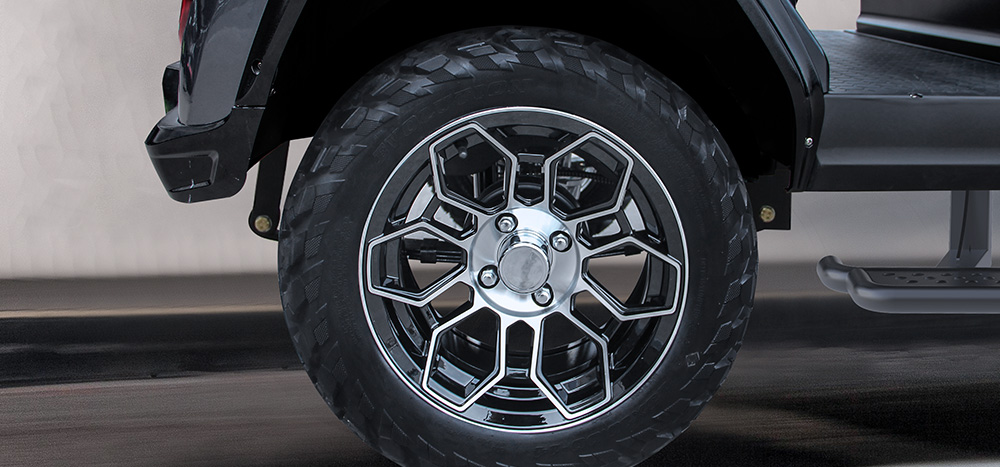-
Shopping Tools
-
Care & Maintenance
-
About
-
Dealer Login

For most setups, recommended tire pressure falls between 15 and 25 PSI, with many carts riding best around 20–22 PSI. Always confirm the exact number in your owner’s manual or on the tire sidewall, since PSI varies by tire style (standard, all-terrain, low-profile), load, and brand. The goal is simple: give your electric golf cart a pressure that protects tread, sharpens steering, and keeps passengers comfortable.
Correct pressure: Delivers a sweet spot of comfort, grip, and even wear across the tread.
Under-inflated tires: Increase rolling resistance, wear shoulders prematurely, reduce traction on pavement, and place extra strain on the motor and batteries.
Over-inflated tires: Ride harshly, shrink the contact patch so the center wears faster, and heighten the risk of damage if you strike sharp debris.
| Tire type | Typical PSI window | Where it’s used | Notes |
|---|---|---|---|
| Standard turf / pavement | 18–22 PSI | Courses, neighborhoods, resort paths | Good balance of comfort, tread life, and steering feel. |
| All-terrain / mixed surface | 15–20 PSI | Gravel, hard-pack, light off-path | Lower PSI improves compliance; avoid going under the tire’s min. |
| Low-profile / performance | 20–25 PSI | Paved routes, firmer handling | Higher PSI sharpens steering; watch for harshness on rough surfaces. |
Bottom line: Start with 20–22 PSI as a common baseline, confirm against your manual and sidewall, and tune within the 15–25 PSI range for your routes, weather, and load. Consistent checks keep handling crisp, rides comfortable, and batteries happier—so every trip feels smooth from driveway to destination.
